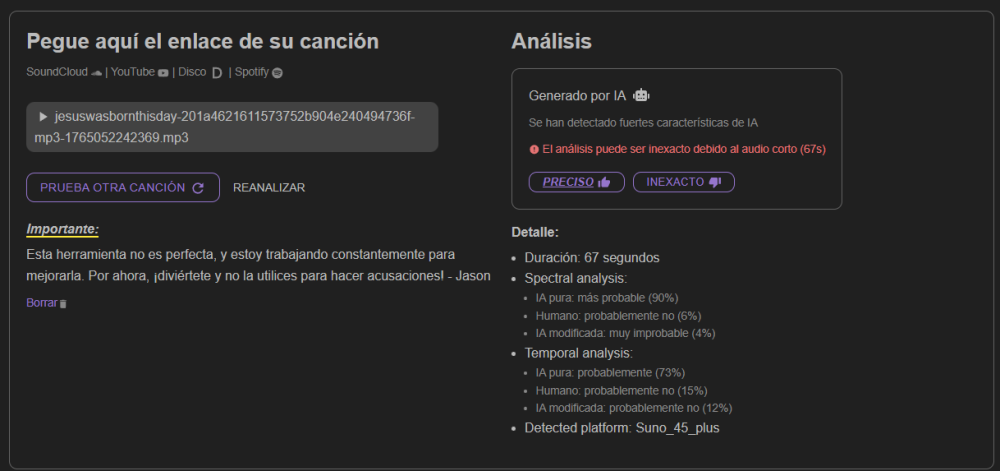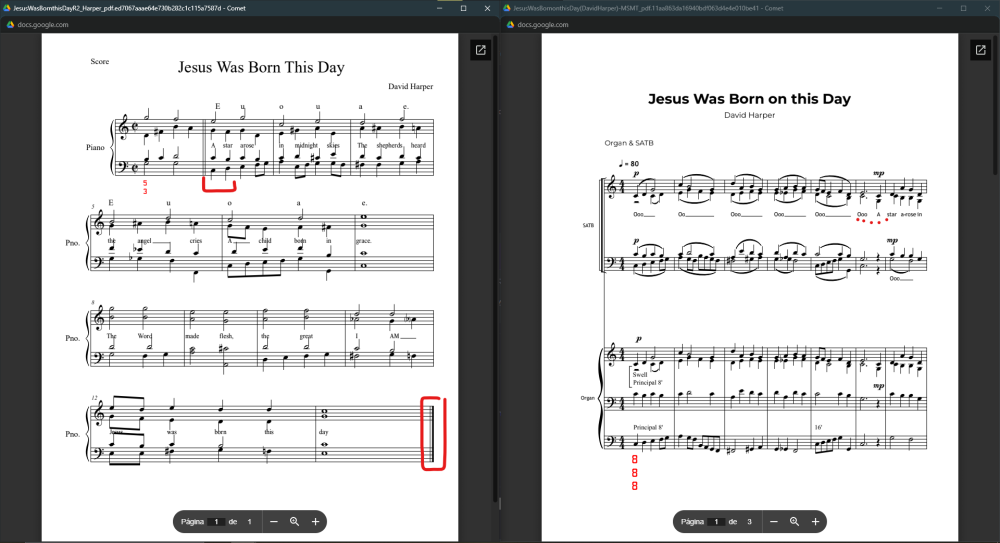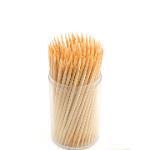Leaderboard
Popular Content
Showing content with the highest reputation since 11/17/2025 in all areas
-
Also something else I need to say about this: So I, and others, can put in hours of work writing the music, orchestration, making detailed mockups, etc. but a guy who writes a Suno prompt and has a "piece" in 5 minutes is treated as equally-valid in this event? It isn't actually even his music. Where is the "fun" in that, exactly? Why even bother? You guys say you want more people to do reviews. What your reviews are going to become if this kind of thing is permitted is a bunch of people being like "Nice prompt bro, but I would've said 'romantic soaring strings' instead of 'cinematic'".8 points
-
Hello folks! Been a little bit (always is a little bit between when I talk on here it seems) I've been hard at work at college writing all sorts of stuff, but amid all the music I'm writing and playing for school, I've also been working on a personal piece for solo piano. Dedicated to someone I love very much, the piece is an exploration of love. Movement 1 is the only movement written so far, and it is about passionate love (maybe I'll call it Eros. Still figuring out names or if I even want names for the movements.) I'll explain the movement's structure so you can maybe understand what I'm trying to do. Intro: It starts floating on an A dominant 7 chord, overtop of which soars a delicate but sometimes dissonant melody with huge leaps. It remains in this uncertain space a little while. Then it bursts into arpeggios and a fanfare-like triplet motif in F Major, gradually building more and more, before collapsing into the exposition. Exposition: The first theme in F minor is fiery and built from two motifs, the passionate right hand and the rumbling left hand. Cadencing in the relative major, the motifs then set off to transition to the next area. The second theme is in the distant key of D major and is a beautiful transformation of the melody from the introduction. A recurring turn motif brings the melody to its PAC and the closing theme commences with triumphant arpeggios (you will hear the inspiration from Chopin Ballade no. 4) but is suddenly overturned by D minor with the rumbling left hand motif of the first theme, ending the exposition dramatically in Bb Major!! Unlike I think literally all of my other sonata form pieces, there is no exposition repeat before the development. Development: In the soundscape of the exposition's closing chord, the developed introductory melody quietly emerges, again unsure, interwoven with fragments of the first theme. Eventually the second theme's rumbling motif takes hold, and a series of violent sequences commences. At its climax, it collapses again in a whirlwind. Out of the bleak, emerges now the second theme, in a hopeful manner, modulating from Ab Major to E minor, and finally culminating in the most passionate and beautiful variation in G Major, with repeated chords and heavy rubato. It reaches its turn motif and PACs in G Major erupting into the closing theme arpeggios, but now being derailed again, even earlier than last time into C minor! And now we're at the Fugue, based on the same rumbling left hand motif that's been so persistent in the development. After reaching its peak, it sequences a little more and is now in C Major and has successfully set up the dominant retransition to the tonic F minor! Recapitulation: First theme is mostly the same as before. The transition is however different and more "bravura" than before. The second theme tragically is now in F minor, and doesn't get its old turn motif to cadence, and instead prepares to close the movement in the drama of the first theme. But it's diverged! We move away from that extreme low register now into the highest register as we hear one last time the full second theme in F Major, much barer and more suspended, but again with its cadence motif. But it doesn't finish quite yet. It repeats the motif, before slipping back into an A dominant 7 chord for the coda. Coda: Largely an exact repeat of the introduction, but what was before a solid dominant pedal, is now broken up by the tonic in the bass, giving a more resolved sound. With no more burst into F major, the movement closes on low D Major chords. Now the reason I really want your guys' feedback is because I want to play this for the dedicatee soon, and I just want to make sure it's perfect before I present it to him. I did show the piece to my professor, but he said it sounded too traditional and suggested I listen to Sciarrino for inspiration 🥲 Let's just say I have different taste than him lol. The performance isn't perfect, and the score is very unpolished! But everything should come across pretty well hopefully. Thank you in advance! 😄4 points
-
I'm withdrawing my participation. Competition or not, if you're putting on essentially a display of music created by members and also giving out site badges for them, then I feel that music should actually be created and produced by the members of the forum. I want my music alongside other human-created works.4 points
-
Good evening again, dear friends. Although I have posted all the movements of the sonata separately, here I am sharing the entire sonata, where you can listen to all the movements one after the other for a better experience and appreciation of the work. It may not be something innovative, but it is the musical language that expresses me, and that musical language is classical pre-romantic. I hope you enjoy it. Thank you once again.4 points
-
“ The calm before the storm, the feeling of eating gas station sushi except instead of intestinal problems it’s your ears getting that treatment. Sonic diarrhea is a seven minute work consisting of random noises, groovy melodies, and the sonic equivalent of having a horrible stomach ache… it’s great for the performers too. They get to have a little bit of fun. Structure: this is treated like a Rondo if you may, (ABACA) we have the sonic diarrhea theme (A) , a calmer theme (B) and a very jazzy theme unexpectedly (c). Enjoy!”3 points
-
I've taken the Christmas Carol's "Angels we have heard on high" and "Gdy się Chrystus rodzi" (a Polish Christmas Carol which translates as "When Christ is being born"). I wrote two variations on this Polish Carol last year and you can find them here to become more familiar (if you want): There was some confusion in that thread about which Carol I was actually working on (LoL) owing to the fact that both of these Carol's prominently feature the Latin lyrics "Gloria in excelsis Deo". But that was basically the inspiration for putting them together in this mash-up. I painstakingly entered multiple stanzas of the Polish, English and Latin lyrics into the pdf score with all the correct accent marks and whatnot so let me know if it's clear! Thanks for listening and comments, suggestions, critiques or just observations are always welcome! Merry Christmas and I hope you enjoy listening! ☃️3 points
-
🎄🌲🎄🌲---=== It's time for our annual Christmas Music Event!!! ===--- 🎄🌲🎄🌲 It's that season of the year again and time to write music in your adored wintry (or summery for those in the southern hemisphere), Christmas-y, Hanukkah-y, or Kwanzaa-y style! The only rule is that this is not a competition!!! So please review the pieces casually, only using the competition reviewing template on those who have expressed a desire/interest in having their music reviewed in this way! 🎅 In this event - anything goes! Submit music in the spirit of the holiday season of any duration or instrumentation! There will be badges given out for all the participants, of course! We will also give out "Ardent Reviewer" badges for those who take it upon themselves to review all the participants' music! You do not have to review any AI-generated works in order to receive the "Ardent Reviewer" badge. This thread will double as the submissions thread as well as the event announcement. Please post only links to your music posted elsewhere in the forum (so that it may be properly reviewed in its own dedicated topic). The following members have thus far expressed interest in participating: @PeterthePapercomPoser @Monarcheon @TristanTheTristan @AngelCityOutlaw @PCC @Crescent Roulade @Mooravioli @Wieland Handke @gaspard @therealAJGS @Vavrinec @Vonias @HoYin Cheung @Musicman_3254 The event opens on Black Friday, right after Thanksgiving! And closes on December 31st! Excited to see what we all come up with this year!3 points
-
Hey there Matthew, Do you have a teacher? Or do you study music on your own with online course guidance? My opinion is do what you want, learn what interests you, but I think it's really advantageous to continue with tonal harmony. When you learn why tonality broke down, it helps with understanding the motives atonal music is trying to achieve. Also, post your music if you haven't already! That'll really help with your growth, as even strangers on the internet can provide a wealth of knowledge. Cheers buddy3 points
-
For my 2nd submission to this year's Christmas Music Event I come to you with yet another mash-up of two Christmas Carols! "God Rest Ye Merry Gentlemen" and "Jezus Malusieńki" ("Little Jesus" in Polish). I have input 6 stanzas of each Carol here into the score. I once again wish I had Cantamus as listening to both the English and Polish lyrics at the same time would really enhance the listening experience to those who speak both languages. The piece starts off with a 3/4 variation of "God Rest Ye Merry Gentlemen" and then follows a stanza of "Jezus Malusieńki" before the Carols are combined together at the same time in various different ways, some of which are slightly polytonal. I've been told that the harmony reminds of the English Renaissance in some parts, but let me know what you think! Thanks for listening and I'd appreciate any comments, suggestions, critiques or just observations! P.S.: Here is my first Christmas Mash-up that I submitted earlier for this years Christmas Music Event:3 points
-
Hi all, here is a composition I began in 2011. I rediscovered it in my computer files and decided to rework it and give it some new life. Hope you enjoy the work. All comments welcome as usual.3 points
-
Hi my dear readers, it's me again. I don't understand many things here, but first things first. Imagine that I say this piece is evidently made by AI. It would be very easy to prove me wrong, @Vonias. Instead of submitting .mid files, a better, more detailed description of the process you followed would have clarified all posters here of what you did and what you have not done with it. Personally I don't care a single bit about that but we'll get to that point later. Please, consider that you are in a place filled by trained & experienced musicians and some of us have passed hundreds of hours listening to pieces just to give feedback out of either a brief or a more in-depth analysis. For some, not specifying that you were helped by an AI to make a better recording of your work and ambiguously describe it or talk about it with phrases like: may very well lead to confusion and even anger among others who consciously decided against using this tools in order to participate in an event in which ultimately your compositional ability is what we want people to show off, review and comment. Various AI tools exist to "help" with that recognition, but they are still in beta (mostly) and their own creators advise against using them as reliable methods. I took the liberty to pass the audio to some, despite you confirmed that the recording is AI: It basically says "Pure AI" 90% and provides a model. Tell me —if you want— if it hit it, this will make this developer's work better. But the thing is that you say everything else is not AI-generated. And this is where we get into trouble here. There are two different pieces here. A pdf submitted along the creation of the post that has little to do with the final mp3 you provided and the score that apparently resembles the mp3, according to you, 1:1? What's exactly the relation between the first and second scores? I can see some, let's say "adventurous" chords in the first score but not that many in the second. First score is half the size, begins with a different voicing. Rhythms don't really coincide, lyrics rest at different places "angel____ vs. an-gel cries___" . Midis are all over the place but you can clearly see the difference. Just pointed out some. What @AngelCityOutlaw is pointing out is mostly in the right direction but: That would not work. You need a seed too. If you do that yourself twice with the same material (and without fixing the seed) you'll get different things if you don't specify the same seed to the model, whatever it be. It happens with music, but also with LLMs and Image & video generators. And there are various tools to treat, import and export midis. Generating high-quality products using it is a whole 'nother story yes, but we ain't talking about one here, this is a <1 minute composition. Finally let me tell you that I don't mind if you just made the whole thing via AI, a part, or whatever. I would prefer you and anybody else in that situation to be honest and clarify things from the beginning to the rest of us who most likely are prone to and will have a listen to your piece, perhaps even giving some also honest feedback in exchange. Regarding that, the audio doesn't seem quite fitting. The strange autotune sound that the AI apparently gives to the singers sometimes and the strange cuts in vibrato feel off. The piece lacks development but it's a short "poem" more or less, right? For more info on this topic of using AI to make/export/import music on many formats, an AI that I have enslaved using a rectangular plastic card that spits money, may show you the way. Or maybe not, who knows: https://www.perplexity.ai/search/can-suno-or-similar-programs-e-2dN_8OipSNCC93.FtFGJoA?sm=d#0 Perhaps I'm late to the party, but these are my two cents. Sorry for my possible typos in advance... I am too sleepy. Regards!3 points
-
This one is a little bit minor, little bit dorian, kept it on the simpler side. 😄 I hope you enjoy, and as always all comments and thoughts are welcome! EDIT: Added Henry's performance... thanks Henry!!3 points
-
not sure if I can meet the deadline, I guess I might be able to share a part of a multisection comp3 points
-
Wow! Some surprisingly good counterpoint, though it's difficult to see how it will all fit together without the text underlay. Consciously or not, you've taken a cue from Niccolo Jommelli (1714-1774) in scoring your Requiem for voices and strings alone...his Requiem (1756) was the most popular and often requested of its day, until Mozart wrote his in 1791. The sparing orchestration makes it more likely to get played. I agree with ComposaBoi on just about everything he said. Measure 11: The tenor part goes dangerously low, down to B below tenor C; consider a D instead if it won't mess up your counterpoint. Measure 17: Awkward for Violin I - the C on beat 3-1/2 is icky to try to reach down to there, it means shifting a third down the fingerboard for one note, then shifting back up again; consider the G above instead. Measure 31: Odd ending, it seems to me. There is no third in the chord, and while that's not without precedent, I don't feel like it works here. Consider an E-flat as the final note in the Soprano and Violin I. Show us more of this as you have it! Well done!3 points
-
The counterpoint is very impressive, so well done! I would have liked to see how the lyrics align with the notes, but I'm not sure if note flight is capable of that. I would definitely recommend musescore if you can fit it on your computer. It is free after all. The main issue is how you're writing for your forces. Violin octaves are a little unreasonable for a tutti section. It's too difficult without a good justification. I would either NOT have the octaves, or have the violins divisi. And the voice ranges are going into risky registers. There's a good short guide "ranges for choral singers: a guide for composers" by Chris Hutchings that's literally just a page and tells you pretty much all you need for writing for choral voices. You can probably find it online.3 points
-
Idk, I still think the flow is off. Maybe its just a stylistic preference, but the cadences into rests, then starting back up again threw me off. I kept thinking the music ended, but then it kept going. It's nice as it is though, its a really great picture type of piece, like a tone poem. I just think it could have been shorter if you like it the way it is, to me its begging for contrast. Not necessarily something crazy, like throwing green paint on a black and white drawing. But for instance, your harmonic texture is nearly the same throughout. You change chords at the same rate, which makes it monotonous after a while. That can be fine, but we never went somewhere else, so it staled a bit to me. It was very pretty, and as always your coloring is fantastic. The sax is always a nice touch, and Im a fan of your style! Thanks for sharing bruh3 points
-
Greetings all! Hot off the presses, here is my latest piece, my Oboe Quartet in D, for Oboe, Violin, Viola, and 'Cello. It's in four movements and lasts about 17 minutes. I don't have any accounting for why I decided to write this piece. I was just sitting there one day after I finished a Divertimento for woodwinds and had let some space come between - several weeks without writing - and the idea for the opening movement came to me out of the blue. I started writing, and it came pretty easily. The whole thing took about a month intermittently. I'm a violist, not an oboist. A couple of weeks ago I made a post asking for some guidance as to the limitations of the oboe, and got some good answers. After doing some research on my own additionally, and checking with a friend of mine who plays Classical Oboe, I've made some calculated demands in the upper register of the instrument that I'm hoping won't be too taxing on a Classical instrument. It certainly should present no problems to a player on a modern instrument. I did my best to provide reasonable opportunities for breath - the last movement being the most demanding in this way, but circular breathing may be a good option - as well as quite a number of rests to allow the player to rest his/her embouchure. I've done my best without selling myself short, and I hope it shows. I hope you enjoy this. I look forward to your comments. Thanks! - Composed: November 13 - December 6, 2025 at Austin. - Instrumentation: Oboe, Violin, Viola, Violoncello. - Style: Classical, ca. 1790-1800 - Duration: 17:15 - Electronic Rendering by Finale 27 music notation software’s "Human Playback" with NotePerformer 4 artificial intelligence assisted interpretation.2 points
-
Hello everyone! I know it has been a while since I have upload a piece of music. That's because I went to balance uploads with reviewing, and sometimes I might be busy with my own compositions. This piece I am sharing with you is a solo piece for piano. Here is my goals this piece: 1. A short piece no more than 1-2 minutes. 2. I want to a write a piece a minor; however, you do not hear tonic. 3. It uses dissonance to establish dark, foreboding mood 4. You may think...Mussorgsky? Maybe? 5. Uses a short motive through out the piece to create variations. I can not think anything. Let me know what you think. I used to Audacity to render the wav to a mp3.2 points
-
2 points
-
@PeterthePapercomPoser Below you will find my review for your chorale Taste: This piece seemingly uses two traditional Christmas chorales. We can hear how one lead into the other with no hiccups. The general audience might not notice the subtle transition, but those who perform it and the carols will. This will be great piece for concert. Instrumentation: The string accompaniment provides harmonic support for the vocal. We do not hear strings often. It is often an organ. But organs cliche. To answer if this playable? Playable is not correct word. Singable is. Yes a choir can and should. The score can easy to read and follow. No issues here. Others have mentioned: it reminds them of ET 3 or Mozart or Haydn. Those great choices, but homophonic texture with harmonic language reminds of Tchaikovsky; and maybe beethoven?2 points
-
2 points
-
“Greetings, dear composers. And with this Allegro, my second sonata is complete, and I am very happy and satisfied with the entire work. This movement is like etude of modulations, but I believe I have refined it well enough for everything to sound natural and have the right balance. I hope you like it.”2 points
-
2 points
-
since this part is rigid, very busy with the eighth notes, and has fragmented melody, maybe the next section could be in higher register, dominated by sustained chords, with a longer legato melody for contrast? or it could go the other direction and be very heavy, lower register-y stuff. and thenn maybe for the repetition, you could combine the two characteristics of both sections into one: having the driving force of the eighth notes while simultaneously have the underlying sustained harmony. this is just my interpretation however, just options that i've thrown spontaneously. but i hope they could help!2 points
-
I'm sorry Mike, but you guys folded like a cheap suit in a matter of minutes. You give these AI bros an inch and they'll take 3 miles. What is to say you won't fold the same when it's not "just for fun?" Aren't all of these "just for fun" in some way? And people will bring up that "Well you accepted AI that time!" Is this a place for composers, or a place for grifters passing off AI music?2 points
-
After undergoing plenty of struggle to find a proper textual setting capable of matching the rhythmic patterns of this vocal fugue, I decided to settle for an altered version of the "Libera me" movement commonly found on Requiem masses. Despite the minor changes required for the text to fit the subject of the fugue, its treatment throughout has been a conscious attempt to make it as audibly intelligible as possible, as opposed to the vast majority of my previous vocal works, where any regard for the text was completely secondary to the music. This composition, as well as its harrowing message, has been dedicated in memoriam to the victims of the Wang Fuk Court fire, which tragically befell Hong Kong on November 26th. May their souls find peace and eternal rest. 請安息吧! YouTube video link:2 points
-
What I said is that there is no way AI generated "just a recording" of his piece. When I googled, even when I asked ChatGPT, there is no AI presently that can generate an accurate — "1:1" as OP says — mockup recording. If there was, Spitfire would be closing their doors right now. He also says he prompted it. Okay well, do you actually believe he sat there and typed out an entire note-for-note description and it rendered it? If you believe that, then prompt the AI (he doesn't say which he used) and if you don't get the exact same result, then you know he's lying. I can't get Suno to generate a solo drone, never mind a precise multi-voice harmony for choir that is 1:1 what I'd write. What has most likely happened here, is he is passing off an AI generated track as "his" work because it fit the "vision" he had or something and is providing you with a transcription. Until someone provides evidence and can replicate this piece with the same prompts or software, there is no reason to believe otherwise.2 points
-
Hi long time for no posting! I decided to post an old work of mine.This Nocturne in C-sharp minor is a juvenile work of me as a 16 year old. I didn't think much at the time of composing, but I did write in the style of Chopin Nocturne then. And then a sudden thought caused me to have a 1st try in fugue in 2:35! I revised the work recently to improve on some voice leadings and transitions except passages after the fugato, but retained as much the original intention as I can as a 16 year old then. The work, even though as immature as it is, does reflect some of my feelings then. Here is the Youtube video and the score of the piece: (Final Draft) Nocturne in C sharp minor.pdf This work can be regarded as in a rondo structure: 0:00 1st part(A), typical Chopin Nocturne texture. Don't know why I modulated the music to F major but the music did so himself... 0:58 2nd part(B) Main melody in F major, but with a new b motive in b.31-32 1:35 3rd part (A') The main melody in the original key can't wait to enter... Gets more agitated and cools down. 2:35 4th part (B'). A fugato using motive b as subject and main melody as episode, modulates once more to F major 3:57 Last part and coda (A''): The A section returns with some registeral change, then gets more agitated. 4:29 is the climax of the piece which is my favourite too, I like the agitation in it. 4:47 starts the coda and finally the mood cools down and ends in tonic major. I played the recording myself. I do make one major slip in 3:22 but the recording is otherwise good enough for me. Feel free to leave comment below! Henry2 points
-
Happy Winterval to all! This is a work I posted previously in the incomplete section, and it takes the form of a mini-concerto for violin (with the movements indicated by the rehearsal marks). It's more or less finished now; though I may still have to tweak some of the voice leading, and haven't started writing in the slurs yet. Since I last posted it, have added a coda at the end, and a whole bunch of counterpoint throughout the piece. (N.B. Rehearsal mark C indicates the start of the coda.) The work was inspired by Vivaldi, along with a modern work called "The Gold Standard" by Richard Harvey. (The latter was the main inspiration for the coda.) Think the most successful melody-line is in the second movement, as this carries emotional weight for me. The other two movements are more like baroque dance music. (I could imagine the cast of "Bridgerton" dancing to them at a ball!) I may have to cut the work down, as we're not really supposed to go over 5 minutes, and I'm now at 6. So any suggestions about where I could cut would be very helpful. Not quite sure the structure is properly balanced at the moment, or whether the movements gel together as a coherent whole? Any suggestions on what to name the piece also welcome. N.B. The dynamics and articulation are intended for midi rendition, and will have to be adjusted before I send it to the orchestra who are performing it next year.2 points
-
Hi! I'm looking for any feedback on a string quartet that I composed so that I can make some refinements before entering it in a few competitions. Thanks!2 points
-
2 points
-
2 points
-
Then you can take some of your time to review my works! They all have scores haha. Henry2 points
-
i’m hoping to participate, itll be a long shot finishing everything up and recording it in time but yeah2 points
-
I would enjoy to participate in this event, too. I hope that I can accomplish my contribution within the next two weeks. Looking forward for listening and reviewing the contributions of other participants2 points
-
2 points
-
2 points
-
Hello @TheGreatEscaper and welcome to the forum! I love this Mazurka-like prelude you've written! It has so much individuality and character! It reminds me at different points of both Chopin and Prokofiev. The chromaticism is very dark and ominous. The fact that you play your own works is great as well (and apparently you've already played @ComposaBoi's sonata as well! Great job and it's great to see this kind of interaction! You're an asset to the forum!) Formally the piece is a perfect little miniature. The melody sounds like something out of another world when it comes in on the 7th and 11th of the tonality - it's very subversive and surprising harmonically and anything but ordinary. And the accompaniment is like its own melody too that sets the stage for a very ghastly piece that would've been appropriate as a Halloween-themed piece. Thank you for joining us and for sharing this prelude and I look forward to listening to the others! P.S.: Thank you for posting just one piece into the forum to let the reviewers get just a taste of perhaps one of your better pieces instead of suddenly bombarding the forum with a bunch of music indiscriminately! You don't know how many composers do this and it really annoys the people who commonly review others' works here because we don't know which piece to listen to and it turns the forum into a dumping ground for works.2 points
-
2 points
-
2 points
-
“It is a very difficult topic for me since I have so many beloved concertos. Especially when I have to choose among so many that Mozart wrote. I consider Mozart and Beethoven to be the top, but I certainly also have some from the Romantic composers that I adore. I will definitely include 2 or 3 by Mozart. And the ones I don’t include, I feel like I will be doing them an injustice, but what can I do—I have to choose some.” 1. Μοzart Piano concerto no 25 K503 . ( This is seriously my personal favorite piece in general, i cant describe what that concerto means for me ) 2. Mozart Piano concerto no 24 K491 3. Mozart Piano concerto no 17 K453 4. Beethoven Piano concerto no 4 5. Ok here i have to choose and one of the romantic era that is my favorite and this concerto is Brahms piano concerto no 2 PS: “Ah, if only Schubert had written a piano concerto. How much I would have loved that.”2 points
-
p.s. i hope you don't mind, I attached a one-shot sightread of this piece. obviously a lot of mistakes as completely unpracticed, but I like playing through scores I like as it builds my familiarity + understanding of the piece. I think I feel less strongly about most of my above pieces of constructive feedback having played through the piece, other than still thinking that page 2 is unnecessarily floral for what is kind of a simple theme and the fugue does feel a little underdeveloped. Warning in advance that there are lots of mistakes but I think there are also lots of parts which alright and you might appreciate hearing someone else play through your music 🙂 you can hear me get a lot more confident at the recap -> coda I think.2 points
-
@Churchcantor Almost nobody is familiar with Jommelli, and more is the pity. His Requiem is in E-flat major, yet it still sounds appropriately sombre. There are several good performances available on YouTube. Here's a link to my favourite:2 points
-
You know what... by seeing this sentence immediately those two opening chords play on my brain and the music plays itself non-stop.....2 points
-
No Doubt C# minor!! My all fav. piece, Beethoven's op.131 Quartet is also in that key. And I write my 3rd Piano Sonata in the key too. My upcoming piano pieces set will be in that key too. Henry2 points
-
look @Henry Ng Tsz Kiu it has only been a year of me exploring the pipe organ lol but thanks for tagging. surprised you weren't interested in those random pauses... I like the modal harmonies of the piece but I think it would really benefit from specifying the registrations, as the score currently stands doesn't look idiomatic for the organist, and the default computer playback isn't doing wonders2 points
-
I would second that. I can't really get a good impression of your piece from Noteflight, the playback is too ropey. (That may be why you're not getting many reviews.) MuseScore would give a much better rendition of your score, even with no tweaks whatsoever.2 points
-
2 points
-
I've recently been rediscovering the Metroid series Crazy story: About 12 years ago, I covered this song with a friend on OCR. I believe our mix is still up, and someone actually made a guitar hero cover of it.2 points
-
In response to some recent low-quality low-effort posting in the forum the staff have decided to form some rules about proper forum etiquette and what constitutes fair and reasonable use of the forum: 1a) If you suspect that something might have to be deleted by a Reviewer, Moderator or Administrator, don't post it. 1b) Or if you suspect that your post might not be appropriate for some reason consider if it might not fit better in a different section of the forum. The forum has many sub-forums in it that are meant to be flexible and allow users to post all kinds of content, as long as it has its proper place. 2a) Keep threads on topic. Although the forum is meant almost exclusively for music discussions, there are sub-forums which are dedicated to any topic which can be used, if users so desire, to "shoot the sh*t". 2b) But if a thread is meant to be about a specific musical composition posted in "Upload your Compositions for Analysis and Feedback" please keep the thread about the music posted in question. If you want to post a new piece of music as a response to someone else's post, please create a new dedicated topic for that piece. 3) Please refrain from talking about inflammatory topics such as substance use or abuse or sexually explicit topics considered NSFW. And if you must talk about religion or politics, please create dedicated topics in appropriate sub-forums rather than flooding the musical forums with unrelated conversation. Also, please try to keep talk of religion or politics related to music history. Disregarding this etiquette will cause the member in question to be penalized with a warning point and the following penalties: 3 warning points - member's content will be manually moderated by the staff 6 warning points - member will be temporarily restricted from posting content 9 warning points - member will be temporarily suspended from accessing the site 12 or more warning points - member will be considered to be banned from the site permanently Editing of inflammatory posts in question will potentially reverse warning points.2 points


.thumb.png.8b5b433a341551e913a34392660bc95b.png)






.thumb.png.1e2763f479362bbb522da50d31ef2e50.png)






